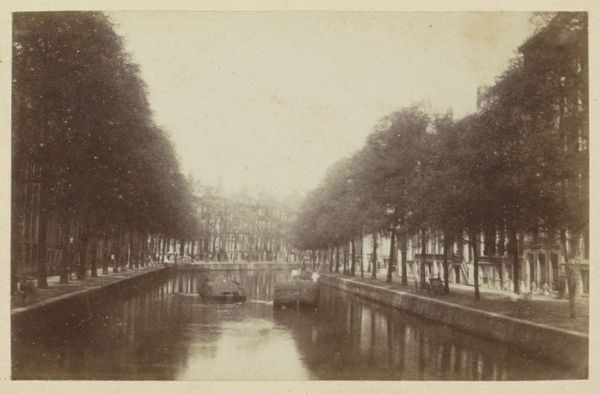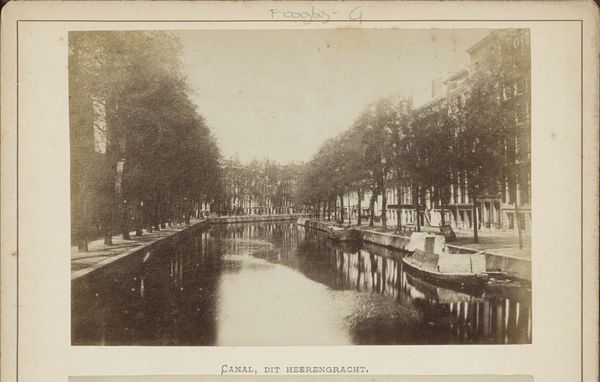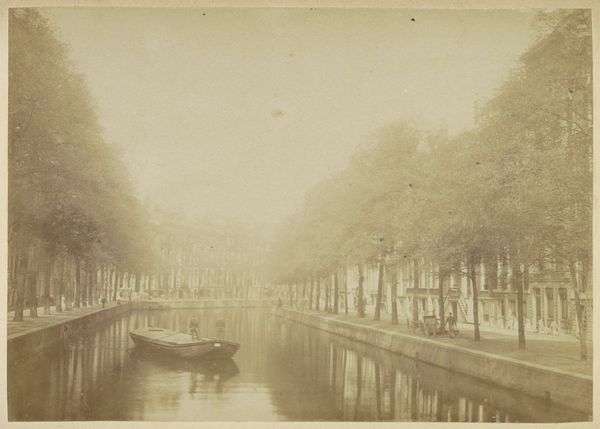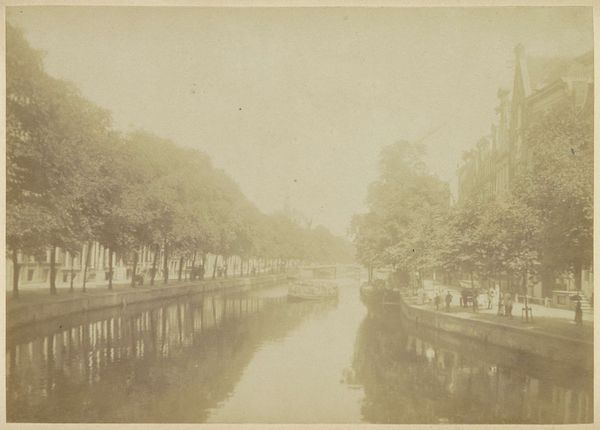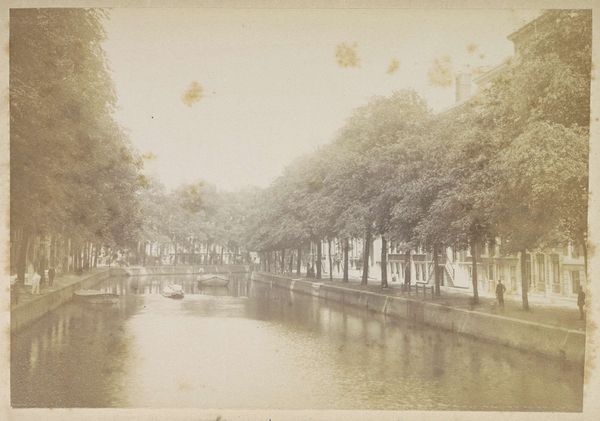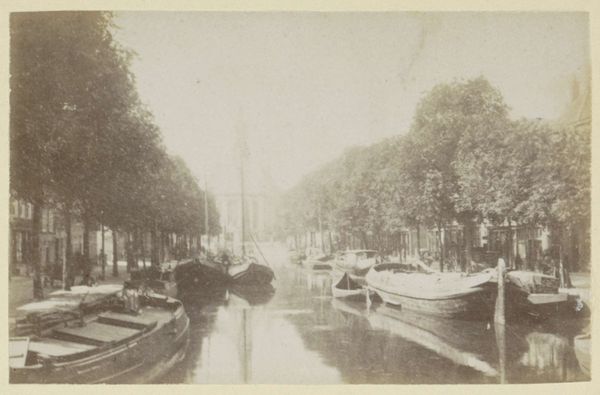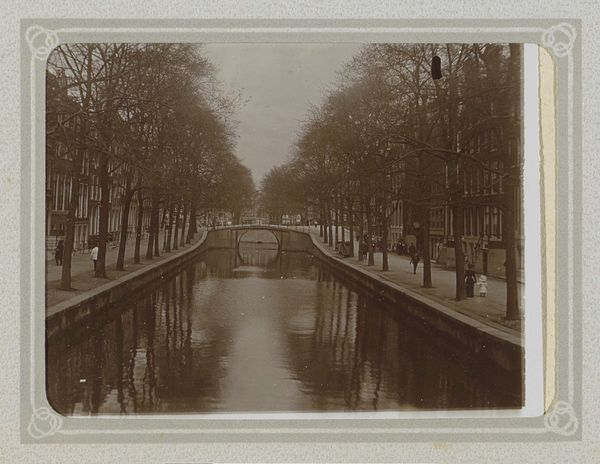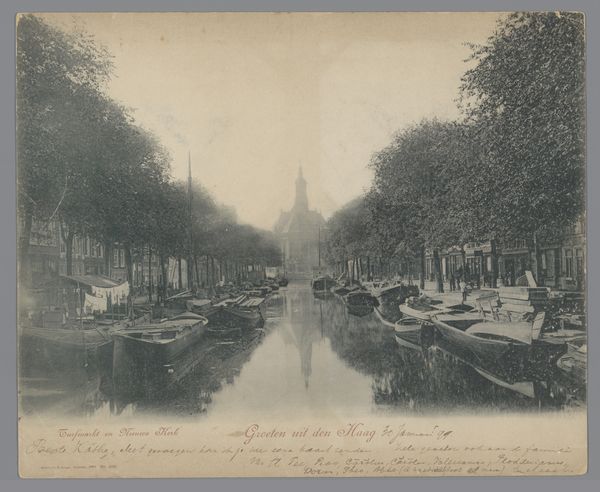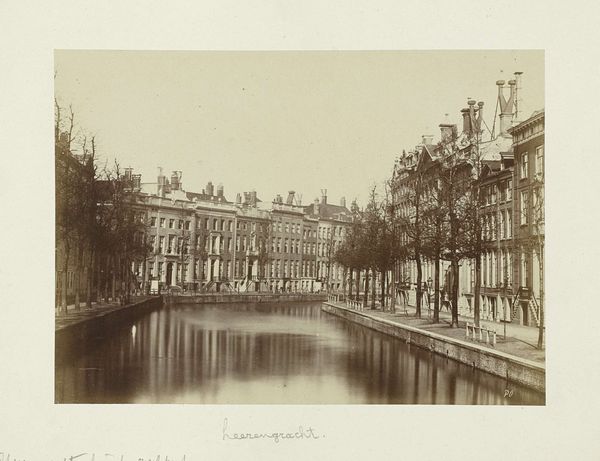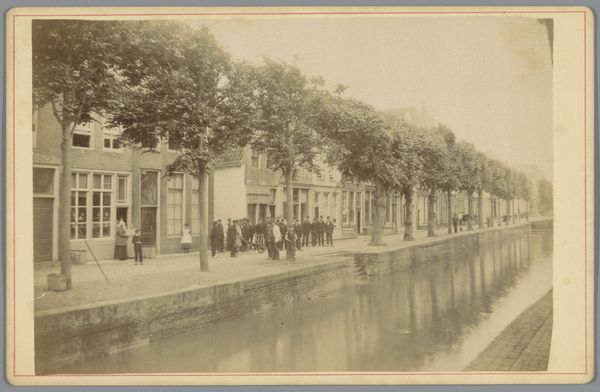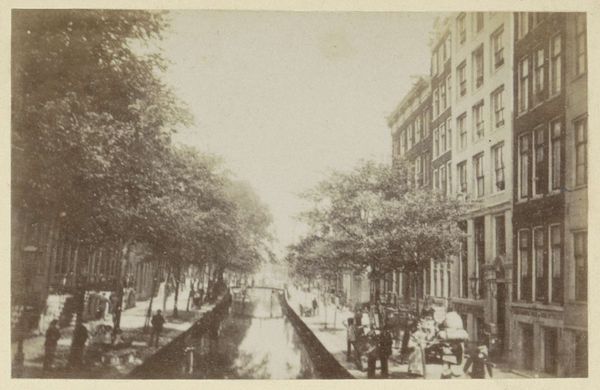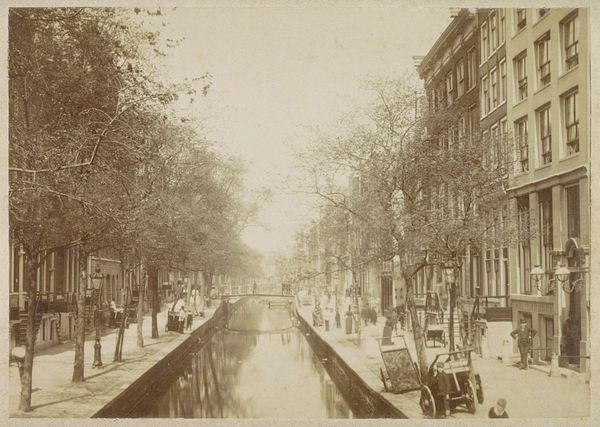
photography, gelatin-silver-print
#
landscape
#
photography
#
gelatin-silver-print
#
19th century
#
cityscape
#
watercolour illustration
#
street
Dimensions: height 107 mm, width 166 mm
Copyright: Rijks Museum: Open Domain
Curator: This serene photograph offers a "View of the Herengracht in Amsterdam," captured between 1860 and 1890. The photographer, Andries Jager, employed the gelatin-silver print process, a popular choice at the time for its sharp details. Editor: It's incredibly still. The way the water reflects those stately houses…it’s almost melancholic, a very poised melancholy, like it's been staged and fixed forever. Curator: The stillness is partly attributable to the technology. Early photography required long exposure times. Think about the social context, though: the rapid urbanization happening in Amsterdam at the time, but this image presents a picture of enduring elegance. Gelatin-silver prints made photography accessible to a wider public, contributing to the documentation and dissemination of urban landscapes. Editor: That brings up an interesting point about dissemination. Photographs like these became commodities, objects of exchange and memory. This print would have been relatively easy to produce and distribute. And I find myself wondering about the labor behind the photograph's making. Were the chemicals easily accessible? Did Jager hire assistants, and what were their roles? Curator: We know gelatin-silver processes allowed for mass production, so while Jager might have directly overseen the initial photographic act, there's likely been a team involved in the printing and marketing stages. Also, look at the angle of the shot. He is not offering you just one building but a view, an environment for civic pride perhaps. How would this resonate with the citizens of Amsterdam who purchased this image? Editor: It provides a tangible and perhaps romanticized connection to their urban environment, turning the lived-in city into an artifact of history. Consider how a piece like this serves as a kind of pre-postcard memento, fostering civic identity. It prompts one to ask: who got to have their experience of Amsterdam validated and circulated in such a format? Curator: Yes, photography in this period wasn't merely capturing reality; it was actively shaping public memory and shaping narratives of wealth, of calm in what was a fast moving urban setting. It’s intriguing to ponder how its accessibility also dictated its circulation among different classes. Editor: The very materiality of this object speaks to that complexity, connecting the grand facade of the Herengracht to the social networks of labor, commerce, and collective identity that helped to create the scene. Curator: It's a perfect example of how examining photographic production offers insights into societal values, class structures and technology of representation itself during the nineteenth century. Editor: And perhaps how photographic calm papers over constant social change in the Dutch metropolis. Thank you.
Comments
No comments
Be the first to comment and join the conversation on the ultimate creative platform.
